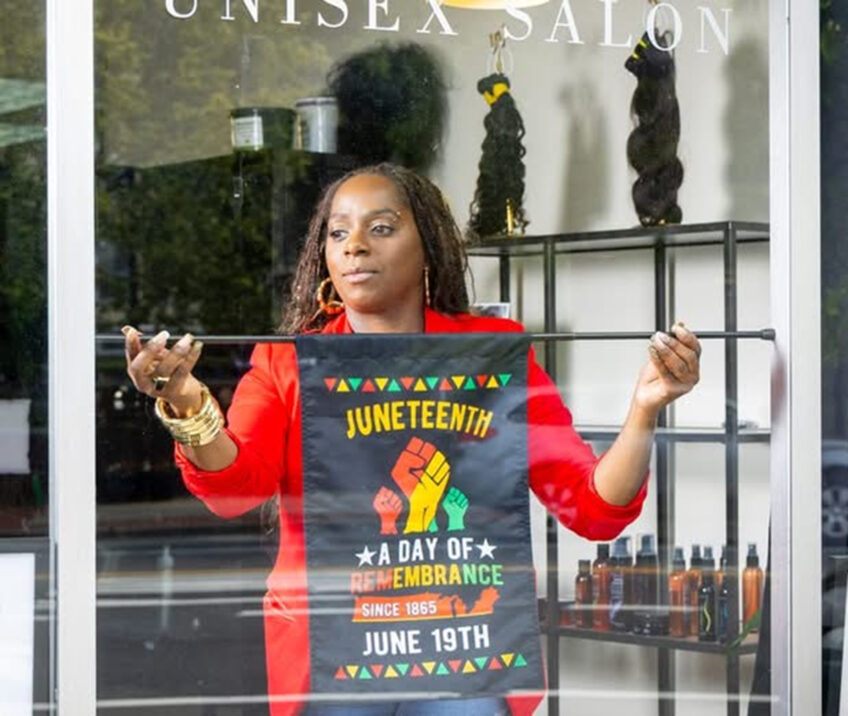On the rise: Diversity hiring
Thanks to corporations like Google, companies are making hiring practices more transparent

A year ago, when tech giant Google went public with what could only be classified as poor diversity numbers — saying that 70 percent of the company’s 50,000 employees worldwide at that time were men and, in the U.S., its employees were only 3 percent Latino and 2 percent black — it shocked many. But not because the diversity numbers were so low; that was no surprise. The shock was they admitted it.
The good news is, though Google is only one example, it highlights that companies increasingly are fessing up about poor diversity hiring results and pledging to do something about it.
At the time, Google Senior Vice President of People Operations Laszlo Bock said that Google’s prior practice to not publish numbers about the diversity of its workforce was “wrong” and that it was time “to be candid” about its diversity hiring issues. It wasn’t hard for Google to admit that the company was not where it wants to be when it comes to diversity, but many lauded the Silicon Valley-based company for concluding there was no way to really address the problem without an open discussion revealing the facts.

Author: Data courtesy of Google. Data from Jan. 2014 — Gender data are global, ethnicity data are US onlyGoogle Diversity Report Charts: Last year, Google has released numbers that show the company lacks diversity in its employees. The chart above shows the breakdown by gender and ethnicity.
Salesforce.com, another Silicon Valley giant, followed suit releasing its diversity numbers. Things weren’t that much different. In July 2014, Salesforce.com was 71 percent male with 4 percent Latino and 2 percent black.
The lifting of the curtain from Google and Salesforce didn’t exactly trigger an onslaught of other diversity challenged companies going public with their diversity numbers or lack thereof, but the awareness has certainly been heightened and more and more are making efforts to increase diversity hiring.
A year on from its big confession, Google has yet to release new numbers, but the company is definitely making the media rounds to talk about its efforts to make things better. Step one seems to be to throw money at the problem. Google’s Vice President of People Operations Nancy Lee went public in May saying the company spent $115 million on diversity initiatives and plans to spend $150 million in 2015.
Fellow tech behemoth Intel said it has created a $300 million fund to fuel its diversity efforts over the next five years.
The DiversityInc “Top 50 Companies for Diversity” list is one of the benchmarks for companies that are doing diversity right. Some of the top companies on the list include: Novartis Pharmaceuticals, PricewaterhouseCoopers, Ernst & Young, Sodexo, MasterCard, AT&T, Prudential Financial, Johnson & Johnson and Procter & Gamble.
The size of these companies certainly suggests that those that have money to spend on diversity efforts are successful, but company leaders reveal an attitude about diversity that may be just as critical.
The N.J.-based Novartis was No. 1 on the list the past two years — the first company to ever go back to back at the top. Christi Shaw, president of Novartis, said the company views diversity as directly related to the company’s goals of creating products and services to help patients manage diseases and helps the company “create a culture where people can be authentic and courageous, where collaboration can flourish, and where greater patient and customer understanding can drive future breakthroughs and innovations.”
Robert Moritz, chairman and senior partner at PricewaterhouseCoopers, said: “We have a long-standing commitment to diversity and inclusion. A diverse organization generates diverse ideas, and that’s important to our clients, our broader stakeholder group, and to our ability to help solve the important problems facing the organizations we serve, the communities we operate in and society as a whole.”
MasterCard President and CEO Ajay Banga links his company’s diversity efforts to its worldwide influence and status saying: “Our culture of inclusion has established us as a global company of empowered employees who use their diversity of thought, experience and background to advance innovation and MasterCard’s contributions to society.”
While most companies cannot afford to toss hundreds of millions of dollars at diversity, more companies have accepted the importance of diversity hiring and are willing to invest in it.
According to Lila Kelly, president and founder of Lila Kelly Associates, a company that helps businesses develop diversity hiring initiatives, there are some simple steps to implement in the hiring process that any business — no matter the size — can do.
Most important is two look at the hiring process as having three parts: recruiting, interviewing and hiring. Then a company must analyze how it goes about each process and develop diversity strategies around each.
Step one is to identify bias and barriers for diverse applicants in hiring. Step two is to educate those involved in hiring about how to recognize the bias and barriers. Step three is to make the changes needed to eradicate the bias and barriers.

Author: Data courtesy of Salesforce.comSalesforce Diversity Charts: In July 2014, Salesforce.com also released numbers about the diversity of employees.
Diversity Watchdogs
In Massachusetts, a number of watchdog groups are closely scrutinizing the level of corporate diversity and pushing for more to be done to increase it.
The Commonwealth Compact, a project organized out of the University of Massachusetts, Boston, has been studying the diversity of Boston’s workplace since 2008 and has released three separate studies of its findings. The most recent study, released in 2013 and titled “Managing Up: Managing Diversity in Challenging Times,” covered a five year period to look at the most recent trends in corporate diversity. The study examined about 280 companies with almost 200,000 employees.
According to the study, the 26 percent of the employees were people of color compared to the 18 percent people of color working in Massachusetts overall. This 26 percent figure has stayed constant over the three studies the Commonwealth Compact has done since 2008. The most recent study’s key finding is the level at which people of color work in companies. The study found that only 3.4 percent people of color held jobs at the senior executive level and 9.4 percent held jobs at the mid-level manager level, while 55 percent held jobs at the professional level and 32 percent held jobs at the lowest paying occupations, such as administrative support workers, laborers and service workers.
The study also examined which industries are best at having people of color in high level positions and found that the educational sector had the most people of color in senior management at 6 percent, while the health care industry and the government sector only had 1 percent people of color in executive positions. These findings are similar to findings from previous Commonwealth Compact studies as well.
Massachusetts has another ally in the diversity battle in The Partnership, a Boston company that helps professionals of color find high level jobs. The organization has been fighting the diversity battle for over two decades, working with several thousand job seekers and several hundred of the city’s biggest companies. Led by President and CEO Carol Fulp, The Partnership pushes diversity as a necessity to compete in today’s business world.
For one, customers are global and a diverse workforce offers the kind of perspectives that can understand different cultures.
For another, the U.S. is changing demographically and businesses will need to reflect that — estimates are that by 2050 the United States population will be 30 percent Latino, 13 percent African American and 54 percent people of color overall.
While companies come to The Partnership to help with diversity hiring they also look for help in making sure their workplace environment supports diversity better.
The Partnership advocates for a diversity hiring strategy that looks beyond just the numbers to increase diversity and stresses that to strengthen the diversity environment it is crucial to hire, promote and retain employees of color at all levels of a company, particularly senior management.






